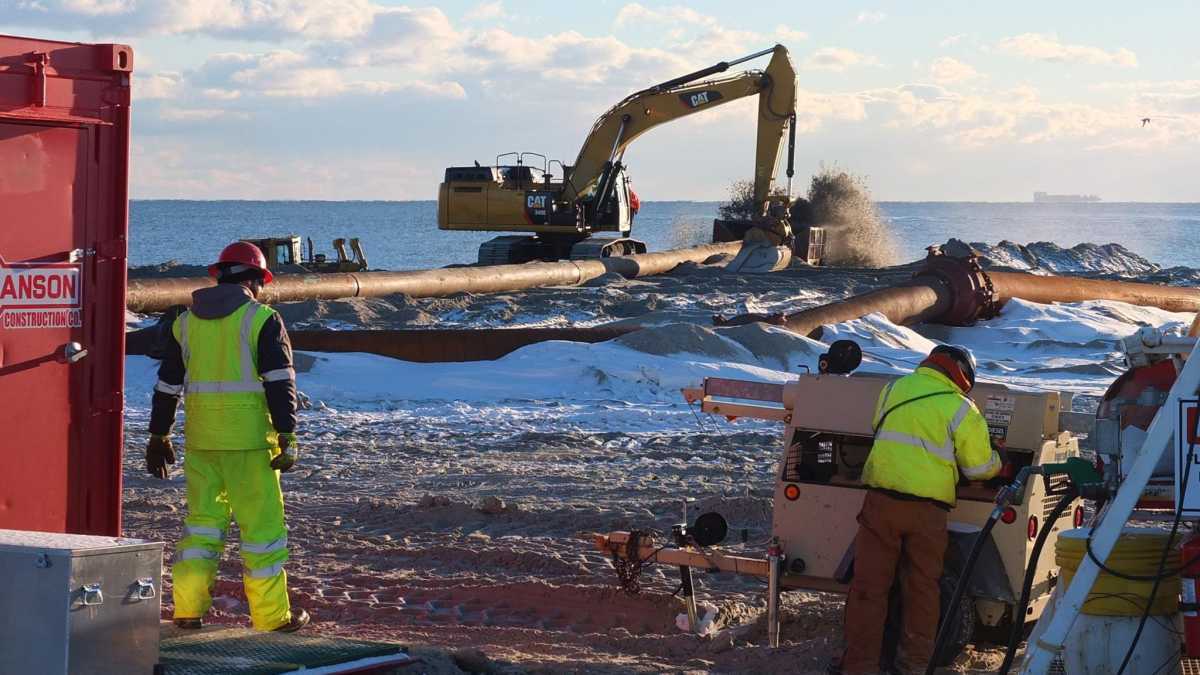Army Corps awards contract for Ocean County beach replenishment

Crews working in the brutal cold in Long Branch on January 26
A project that includes the construction of engineered beaches and protective dunes in the northern Ocean County peninsula is set to begin this spring, Department of Environmental Protection Commissioner Bob Martin announced today.
The Army Corps of Engineers, in conjunction with the DEP, has awarded a base contract of $92 million to Weeks Marine of Cranford, New Jersey to conduct the first phase of construction in an area that was slammed by Superstorm Sandy.
Officials say the ultimate contract amount is expected to reach about $128 million as crews advance work in areas where the state continues to seek access easements from property owners.
“We are very pleased that this crucial project is moving forward,” Commissioner Martin said in a release. “When completed, all of New Jersey’s coastal communities will be afforded the level of protection that comes with beach and dune systems that meet Army Corps’ engineering standards.”
The state has voluntarily received 350 out of 545 property access easements needed for replenishment crews to perform work. 54 easements were obtained through condemnation proceedings, and the state is pursuing additional properties.
The 14-mile project includes beaches in Bay Head, Berkeley, Brick, Lavallette, Mantoloking, Point Pleasant Beach, Seaside Heights, Seaside Park, and Toms River. Work will progress in 1,000-foot sections,
According to project details, offshore pumping will supply some 11 million cubic yards of sand to build dunes 22 feet above sea level and 100 to 300 foot wide beaches 8.5 feet above sea level for most of the project area. Periodic replenishment projects over 50 years will replace sand lost to normal erosion.
65 percent of the funding will come from the 2013 federal Disaster Relief Appropriations Act, while the state will fund the remaining 35 percent from the Shore Protection Fund.
In Sept. 2016, Jeff Tittel of the New Jersey Sierra Club said the project’s funding should be going toward other methods in dealing with flooding risks.
“What this area really needs is a dune system, elevating homes, and buyouts. The federal monies coming in for rebuilding should be going towards adaptation and mitigation, restoring natural systems and requiring green buildings and energy efficiency,” he said. “We should be implementing adaptation and mitigation planning and reducing carbon pollution. The Christie Administration’s failure to deal with climate change has not only wasted millions of dollars, but put people at risk.”
WHYY is your source for fact-based, in-depth journalism and information. As a nonprofit organization, we rely on financial support from readers like you. Please give today.

